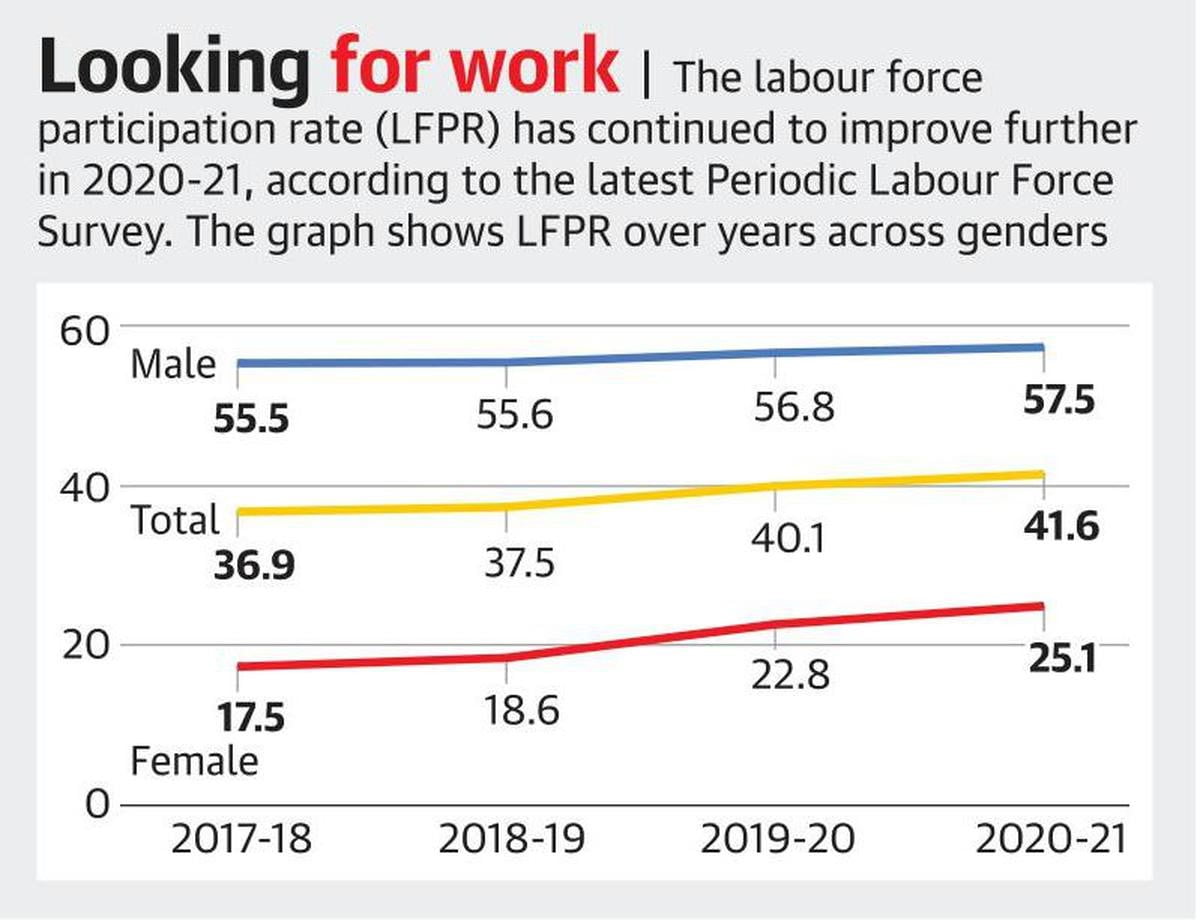Economics
In News: Periodic Labour Force Survey (PLFS) for 2020-21 was released by the Ministry of Statistics and Programme Implementation
Findings
- The unemployment rate saw a decrease of 0.6% and fell to 4.2% in 2020-21, compared with 4.8% in 2019-20
- Rural areas recorded an unemployment rate of 3% and urban areas recorded an unemployment rate of 6.7%.
- The National Statistical Office (NSO) uses “rotational panel sampling design” in urban areas to assess the Labour Force Participation Rate (LFPR), Worker Population Ratio (WPR) and the unemployment rate, and visits selected households in urban areas four times.
- The LFPR, the percentage of persons in the labour force (that is, working or seeking work or available for work) in the population was 6% during 2020-21. It was 40.1% in the previous year.
- The WPR was 39.8%, an increase from 38.2% of the previous year.
- The migration rate is 28.9%. The migration rate among women was 48% and 47.8% in rural and urban areas,

What is the Periodic Labour Force Survey?
- The NSO launched the Periodic Labour Force Survey (PLFS) in April 2017.
The objective of PLFS is primarily twofold:
- To estimate the key employment and unemployment indicators namely Worker Population Ratio, Labour Force Participation Rate, Unemployment Rate in the short time interval of three months for the urban areas only in the Current Weekly Status (CWS)
- To estimate employment and unemployment indicators in both usual Status and CWS in both rural and urban areas annually.
Key Terms
Unemployment Rate (UR):
- It is defined as the percentage of persons unemployed among the persons in the labour force.
Labour Force Participation Rate (LFPR):
- It is defined as the percentage of persons in the labour force (i.e. working or seeking or available for work) in the population.
Worker Population Ratio (WPR):
- It is defined as the percentage of employed persons in the population.
National Statistical Office
- It is the central statistical agency of the Government mandated under the Statistical Services Act 1980 under the Ministry of Statistics and Programme Implementation.
- It is responsible for the development of arrangements for providing statistical information services to meet the needs of the Government and other users for information on which to base policy, planning, monitoring and management decisions.
Source: The Hindu
Previous Year Questions
Q.1) As per the NSSO 70th Round “Situation Assessment Survey of Agricultural Households”, consider the following statements: (2018)
- Rajasthan has the highest percentage share of agricultural households among its rural households.
- Out of the total agricultural households in the country, a little over 60 percent belong to OBCs.
- In Kerala, a little over 60 percent of agricultural households reported to have received maximum income from sources other than agricultural activities.
Which of the statements given above is/are correct?
- 2 and 3 only
- 2 only
- 1 and 3 only
- 1, 2 and 3












